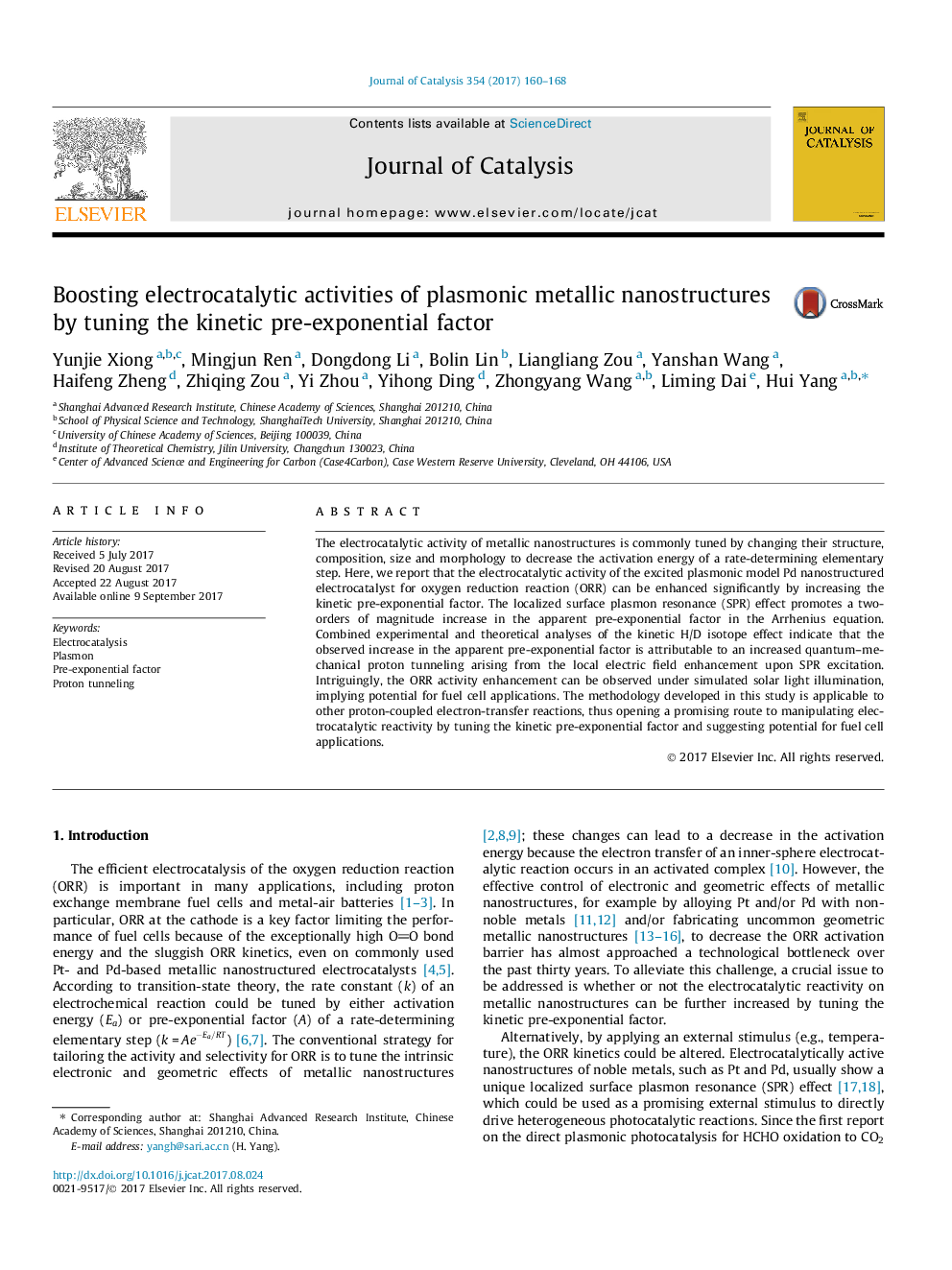| Article ID | Journal | Published Year | Pages | File Type |
|---|---|---|---|---|
| 6455508 | Journal of Catalysis | 2017 | 9 Pages |
â¢Controllable synthesis of ultrathin Pd NRs with tunable length and a tunable SPR.â¢The ORR activity can be improved by an increase of the apparent pre-exponential factor.â¢The enhancement of the proton tunneling contribution upon SPR excitation is verified.â¢Such plasmon-enhanced electrocatalysis is universal to the proton-coupled reactions.
The electrocatalytic activity of metallic nanostructures is commonly tuned by changing their structure, composition, size and morphology to decrease the activation energy of a rate-determining elementary step. Here, we report that the electrocatalytic activity of the excited plasmonic model Pd nanostructured electrocatalyst for oxygen reduction reaction (ORR) can be enhanced significantly by increasing the kinetic pre-exponential factor. The localized surface plasmon resonance (SPR) effect promotes a two-orders of magnitude increase in the apparent pre-exponential factor in the Arrhenius equation. Combined experimental and theoretical analyses of the kinetic H/D isotope effect indicate that the observed increase in the apparent pre-exponential factor is attributable to an increased quantum-mechanical proton tunneling arising from the local electric field enhancement upon SPR excitation. Intriguingly, the ORR activity enhancement can be observed under simulated solar light illumination, implying potential for fuel cell applications. The methodology developed in this study is applicable to other proton-coupled electron-transfer reactions, thus opening a promising route to manipulating electrocatalytic reactivity by tuning the kinetic pre-exponential factor and suggesting potential for fuel cell applications.
Graphical abstractDownload high-res image (57KB)Download full-size image
